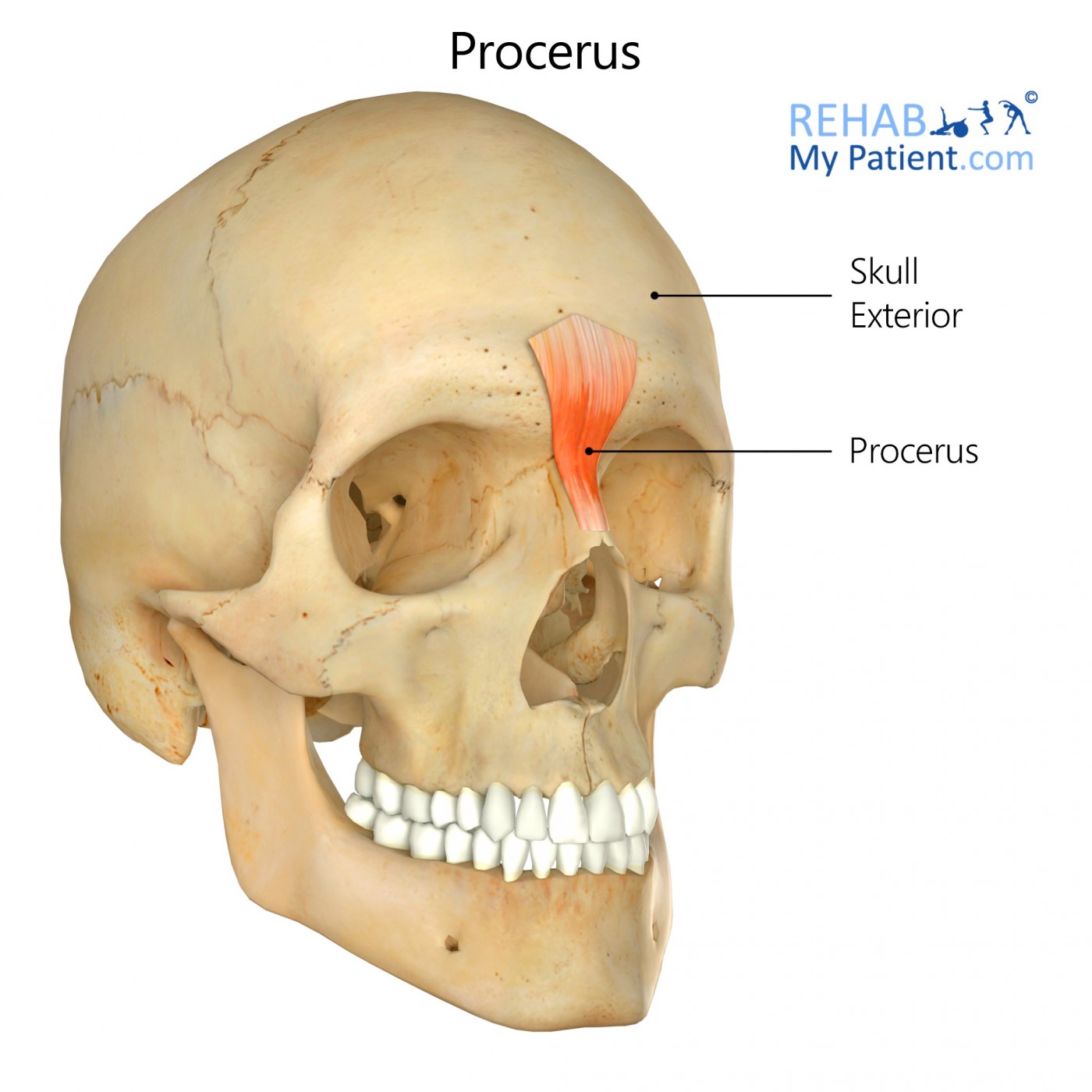Procerus
Opublikowano dnia 28th Jul 2020 / Opublikowano w: Głowa

Generalinformation
Procerus is a small, triangular muscle in the head that occupies the glabella, the area between the eyebrows. The muscle, along with the nasalis, levator nasolabialis and depressor septi nasi, make up the facial muscles nasal group.
Literal meaning
The tall, slender muscle.
Interesting information
Procerus, like the other facial nerves, originates from the second pharyngeal arch. When it contracts, the procerus muscle allows frowning, which makes it important in human facial expressions.
Origin
Nasal bone, (superior part of) lateral nasal cartilage
Insertion
Skin of glabella, fibres of frontal belly of occipitofrontalis muscle.
Function
Depresses medial end of eyebrow, wrinkles skin of glabella.
Nerve supply
Temporal, lower zygomatic or buccal branches of facial nerve (CN VII).
Blood supply
Angular and lateral nasal branches of facial artery.

Relevant research
The 'Procerus sign' remains an important clinical clue for early Progressive Supranuclear palsy. 'Procerus sign' has been described as vertical wrinkles in the glabella region and bridge of the nose of patients with Progressive Supranuclear Palsy. The action of Corrugator and Orbicularis Oculi produce the vertical wrinkling.
Bhattacharjee S. (2018). Procerus Sign: Mechanism, Clinical Usefulness, and Controversies. Annals of Indian Academy of Neurology, 21(2), 164–165.
Batla, A., Nehru, R., & Vijay, T. (2010). Vertical wrinkling of the forehead or Procerus sign in Progressive Supranuclear Palsy. Journal of the neurological sciences, 298(1-2), 148–149.
Procerus exercises

Eyebrow lift (one sided)
Lift one eyebrow as high as possible. Then relax. Repeat on the other side.
Zapisać się
Zarejestruj się już teraz, aby skorzystać z bezpłatnego okresu próbnego!
Zacznij korzystać z Rehab My Patient już dziś i zrewolucjonizuj proces przepisywania ćwiczeń, aby zapewnić sobie skuteczną rehabilitację.
Rozpocznij 14-dniowy bezpłatny okres próbny